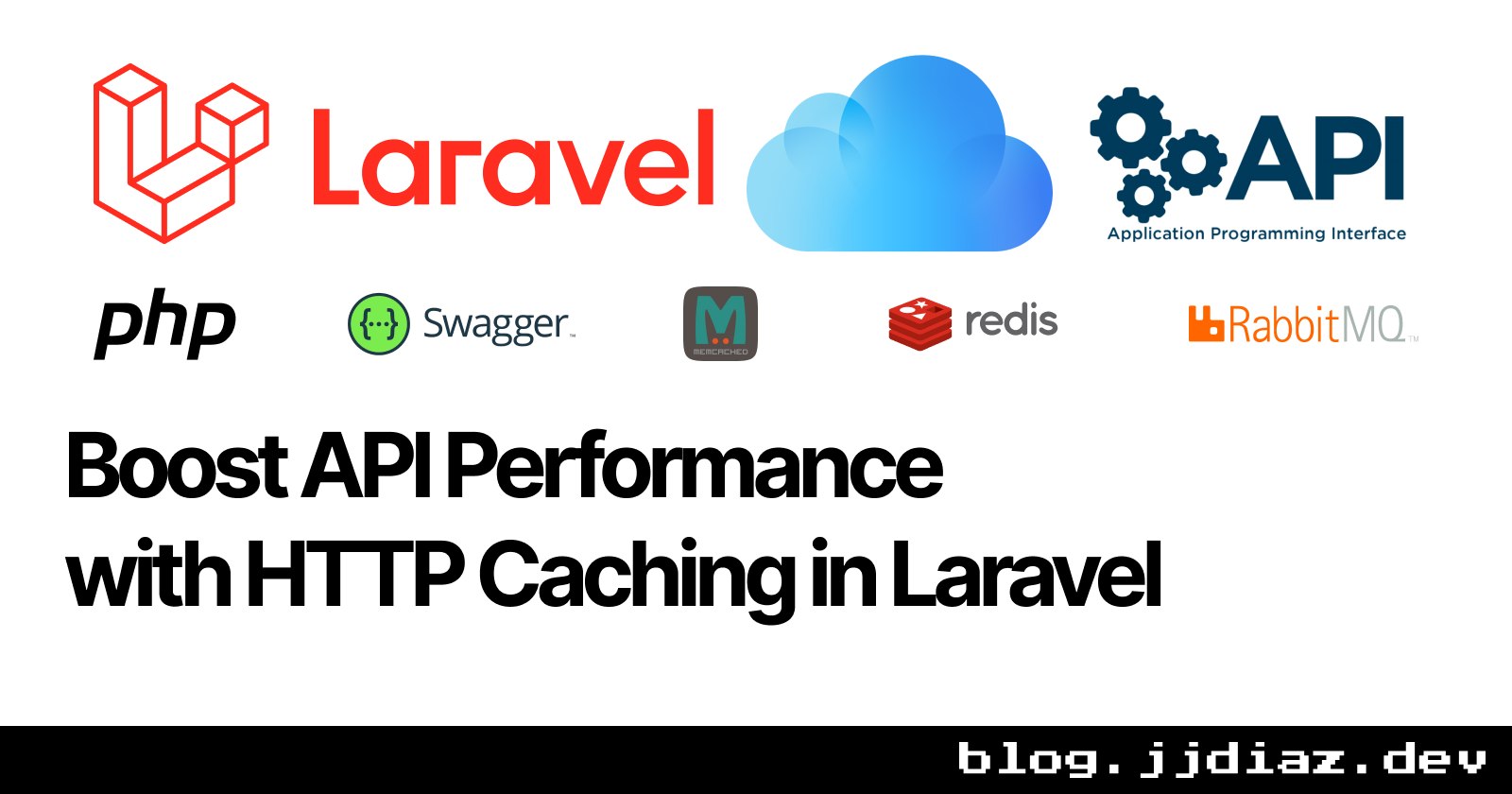Boost API Performance with HTTP Caching in Laravel
 Jose Diaz
Jose Diaz
HTTP caching is a powerful technique for improving the performance of your API by reducing the number of requests made to the server. When a client makes a request to an API, the server must process the request and return a response, which can take a significant amount of time and resources. By implementing HTTP caching, you can store a copy of the response in a cache, so that subsequent requests for the same resource can be served from the cache rather than generating a new response from scratch. This can greatly reduce the load on the server and improve the performance of the API.
Laravel offers built-in support for HTTP caching. To use HTTP caching in Laravel, you can use the Cache-Control header or the ETag header.
The Cache-Control header allows you to specify how long a response should be cached and whether it can be shared by multiple clients. For example, you can use the "max-age" directive to specify the number of seconds that a response should be cached, or you can use the "public" directive to indicate that the response can be shared by multiple clients. Here is an example of how to set the Cache-Control header in a Laravel application:
return response()->json([ 'data' => $data ])
->header('Cache-Control', 'max-age=3600, public');
The ETag header, on the other hand, allows the server to send a unique identifier for a resource along with the response. The client can then use this identifier to check if the resource has changed since the last request. If the resource has not changed, the client can use the cached copy of the response rather than making a new request to the server. Here is an example of how to set the ETag header in a Laravel application:
return response()->json([ 'data' => $data ])
->header('ETag', md5($data));
In addition to Laravel's built-in support for HTTP caching, you can also use third-party libraries such as laravel-responsecache to add HTTP caching to your Laravel application. laravel-responsecache is a simple, yet powerful library that makes it easy to cache API responses and improve the performance of your Laravel application.
To use laravel-responsecache, you first need to install the package using Composer:
composer require spatie/laravel-responsecache
Next, you need to publish the package's configuration file:
php artisan vendor:publish --provider="Spatie\ResponseCache\ResponseCacheServiceProvider" --tag="config"
You can then configure laravel-responsecache to work with your application by modifying the configuration file. For example, you can use the cache_response_directive option to specify the Cache-Control directive to use when caching responses.
To cache a specific API response using laravel-responsecache, you can use the cache method provided by the package. Here is an example of how to cache a response using laravel-responsecache:
use Spatie\ResponseCache\Facades\ResponseCache;
...
ResponseCache::cache();
return response()->json([ 'data' => $data ]);
You can also use the provided cache tags to cache specific groups of responses or use the global caching options to cache all API responses by default. Here is an example of how to use cache tags with laravel-responsecache:
use Spatie\ResponseCache\Facades\ResponseCache;
...
ResponseCache::tags(['users', 'list'])->cache();
return response()->json([ 'data' => $users ]);
In this example, the response will be cached using the "users" and "list" cache tags. You can then clear the cache for all responses with these tags using the "flush" method:
ResponseCache::tags(['users', 'list'])->flush();
Overall, HTTP caching is a powerful tool for improving the performance of your API by reducing the number of requests made to the server. Whether you use Laravel's built-in support for HTTP caching or a third-party library like laravel-responsecache, implementing HTTP caching can have a significant impact on the performance and scalability of your API. By following the steps outlined above, you can easily set up HTTP caching in your Laravel application and start reaping the benefits of reduced server load and improved performance.
Subscribe to my newsletter
Read articles from Jose Diaz directly inside your inbox. Subscribe to the newsletter, and don't miss out.
Written by

Jose Diaz
Jose Diaz
Head of IT @ IMCW. +15 years coding and leading teams. Passionate about building scalable and clean code software. Experience leading software development teams and building applications from scratch to deploy them to production environments. Courageous to face new challenges and without barriers at work, to evolve and improve professionally. Eager to learn and improve.